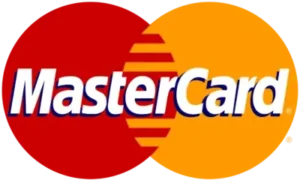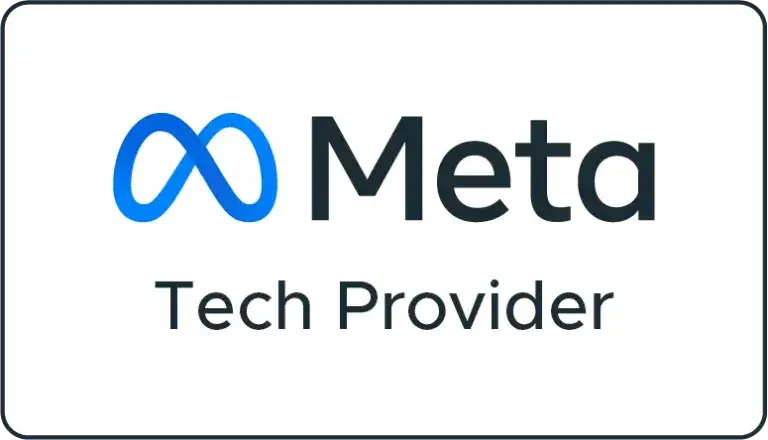Introduction

Lead generation is the oxygen every business operates on. This process is aimed at finding and making good relationships with possible customers interested in your products or services. And if it is about making it efficient in getting top-notch quality leads, for sure, Google Ads is one relevant tool.
And with wide reach, demographic targeting, and quantitative results, Google Ads can really turn out to be a breakthrough for big businesses. In this very exciting guide, we’ll share some wonderful strategies and best practices that will help you maximize your effort to generate more leads with Google Ads.
Learn About Google Ads Lead Generation
Well, first of all, let’s make a very crucial clarification. Allow me to explain exactly how I define lead generation on Google Ads. Lead generation, in the context of this case, is normally capturing potential client information—name, email, phone number, and so on—through your Google Ads campaigns. Such leads might be nurtured in your sales funnel to paying customers. There are a number of lead types that you can generate:
• Qualified leads: These are people who have actually been qualified in a sense and have a higher likelihood to turn into a customer.
• Marketing Qualified Leads (MQL):There can be people who, many times might show interest on certain product but may not proceed in buying or sealing the deal or might just leave the cart idle.
• Sales Qualified Leads (SQL): These are people who are ready to be reached out to by your sales team and have a good level of purchase intent.
It’s very important that you set up clear lead generation goals first, at the beginning of your Google Ads campaign. Define a lead clearly for your business and set clear targets on how many leads you want to generate.
Configuring Your Google Ads Campaign for Lead Generation
Selecting the Right Type of Campaign

There are several campaign types in Google Ads, each serving individual purposes. This is quite handy for lead generation through the Search and Display Networks. These types include:
- Search Network: The ads will appear at the top and bottom of the Google search results page when someone searches for something that is related to your products or services.
- Display Network: This puts your ad on web pages and apps within Google’s ad network.
Whereas the other network types, such as Shopping and Video, can be used for some lead generation, they often do so in ways that are quite different—often fitting specific types of industries.
Targeting Your Ideal Audience.
One of the most important keys to a successful lead generation campaign is effective targeting. Google Ads has numerous targeting options that can be used to target your ideal audience:
- Demographics: The profile of the lead needs to be taken into consideration, based on their age group, gender, where are they located and what language do they speak.
- Interests: Anyone who has an interest in the subjects your business has to offer.
- Behaviors: Reach users based on their actions across the web, such as recent purchasers or device users.
- Keywords: This is the time when your ad would be shown to anyone making searches for specific keywords relating to your products and services.
- Custom audiences: Create custom audiences based on those who visit your website, customer lists, or app users.
Profile Your Target Market: This allows you to target a qualified audience that is more prone to conversion.
Create Engaging Ad Copies
The copy of your ad is actually your first exposure to a potential customer. Make it engaging, informative, and convincing enough to get the much-needed clicks and conversions.
• To the point: The language used should be versatile and clearly understandable, while putting your point through clearly.
• Strong headline: Headlines are meant to be powerful, and they should be coined in such a way that they announce to the people the benefits of your products or services given to them.
• Strong description: Elaborate on your headline and add some more detail about what it is you are offering.
• Strong CTA: Let the users know clearly what you would like them to do: “Learn More,” “Sign Up Now,” or “Call Us Today.”
Use strong action verbs and a sense of urgency to drive conversions.
Landing Page Optimization
The landing page should be the destination of the customer once they click on your ad. It is highly necessary to optimize it in order to capture leads in the right way.
• Explain the value of the proposition clearly and state the benefits of the product and services. Transparency is to be maintained.
• It should always be easy to fill out a form or place a call to take the desired action by a lead or customer, along with easy access and easy handling of the interface by them. A clean, visually appealing design and a very clear layout for a landing page always does the trick.
• Info Relevant: Give relevant information about the product/service to engender trust.
• Fast loading speed: Your landing page is supposed to load fast to ensure that potential leads are not lost.
Optimize your landing page in order to increase conversion rates, hence more leads.
Ways to manage your Google Ads campaign for optimal Lead Generation

Setting Up Conversion Tracking
Conversion tracking is set up so that you have the ability to measure your Google Ads campaign’s success. You can then monitor if there is a successful overall conversion after clicking an ad. Conversion tracking helps you to keep track of whether someone has carried out a desired action on your website—e.g. form submission, making a purchase, or calling a business.
- Form submissions, page views, signing up for a newsletter, sharing a blog to social media or purchases are considered conversions—the actions that happen on a website, as the name suggests Website Conversion.
- Calls that were made to a business and generated from ads are termed Phone Call conversions.
- Measuring in-app activities, like downloads, purchases, or registrations, is done by App Conversion trackers.
Configuring tracking of these conversions will allow you to identify how well the campaigns are performing and to optimize them with data-based decisions.
Bidding for Lead Gen
Maximize your leads while keeping costs under control with the right bidding strategy.
- Manual CPC: You set a maximum bid cost-per-click for every keyword.
- Enhanced CPC: It allows Google to automatically adjust the maximum CPC bid for the ads, optimizing to increase conversions.
- Target CPA: Set a target cost per acquisition (CPA), and let Google automatically set your bids to meet that target.
Target CPA is how most advertisers base their bidding strategy when running their lead generation campaign, as this is one bidding strategy that aims to generate cost-efficient conversions.
Optimizing Your Campaigns for Performance
Continuous optimization is key to achieving the best outcomes for lead generation.
• Monitor the key metrics: Impressions, clicks, CTR, Conversion Rate, CPL
• Analyze campaign performance: Find what the best keywords, ad groups, and ads are versus the worst.
• Pivot: Depending on the leading trends, new pertinent keywords should be added, finessing your ad copy should also be an ongoing process, or adjusting bids wherever and whenever necessary.
The more you track your campaign’s performances and act on them, the better you will be at getting leads.
Advanced Ways to Generate More Leads Using Google Ads
Remarketing and Customer Match
Remarketing is a way to continually show advertisements to people who have come once to your site but did not convert. Customer match lets you target ads in the search results to people based on your email addresses or phone numbers.
• Design ads for appealing remarketing: The ads should contain information that would attract the visitor’s attention and provide incentives for the visitor to act.
• Customer Match Audiences: Target existing customers with a special offers ad or some other type of personalization.
With remarketing and customer match, you will bring more conversions and help create better customer relationships.
Lead Extensions and Call Extensions
Run the lead extensions and call extensions to capture leads straight out of your ad.
• Lead Extensions: Show information, such as business name, address, phone number, and email address, whenever an ad is shown.
• Call Extensions: Make it easier for more people to call your business by displaying your phone number within your ad.
You can have lead and call extensions, which allows a potential customer to get more value from you and to be contacted more easily.
Track Offline Leads for Conversions
Many leads that come in from Google Ads campaigns may result in offline conversions, for example, phone calls or store visits. Tracking these offline conversions would help in attributing their origin and, hence, measuring the effect of campaigns accurately
• Call Tracking: Trace back phone calls resulting from your ads to campaigns with call tracking solutions.
• Store visit attribution: You will know exactly how many physical store visits are generated through Google Ads Store Visit Attribution.
Tracking offline conversions will give you a full overview of how the campaigns really work, hence helping in making decisions backed by data.
Conclusion
Google Ads is just such a fantastic tool for lead generation and driving business. By the end of this guide, you should be able to set up effective Google Ads campaigns that drive great results. Set clear objectives; know the right profile of customers and leads; have a well-curated ad copy; optimize landing pages; and track campaigns regularly with ongoing refinement. Now, with the demands for patience and dedication, you can unlock Google Ads’ full potential in securing any lead generation goal.
Bonus:
Common Google Ads Mistakes to Avoid for Lead Generation
•Not taking care of negative keywords: This is another sure-fire way to get irrelevant clicks and blow up your budget.
•Not using ad extensions: These can enhance how often people see your ads and how many clicks they get from them.
• Not optimizing landing pages: A poor landing page experience will drive any prospects away.
• Having unrealistic expectations: Lead generation is a process that needs consistent work. Stay clear of these mistakes to elevate the performance standard of all your Google Ads campaigns. For deeper insights and better outcomes.
FAQs
• What is Google Ads?
Quite simply, Google Ads is an advertising service by Google aimed at businesses willing to display particular ads on Google search results pages as well as the web and app. It aids in connecting businesses to potential customers who are in need of what your business offers and does so by entering related keywords into Google.
• How much do Google Ads cost?
The price for Google Ads is determined by several factors, such as keyword competition, chosen bidding strategy, and the ad placement. You are charged on a pay-per-click basis. It, however, largely varies with industries and locations.
• Is Google Ads Worth the Expense for Small Businesses?
Yes, absolutely! Google Ads is one of the most effective tools to get new customers. Generate new leads and grow sales: a flexible and agile solution about returns that allows for measurable results and gives value for every dime spent by a business, regardless of size.
• What kind of results can I expect, and how early could I expect to get such results out of Google Ads?
You should, ideally, get some type of preliminary results within a few weeks following the launch of the campaign; however, the timelines will vary. That said, most successful Google Ads campaigns do come with time and optimization. If you are tracking consistently, that will let you get optimal performance with Google Ads.
• How can I generate more leads through Google Ads?
Write compelling ad copy, optimize landing pages, ensure the right targeting, proper conversion tracking, test different bid strategies, ad extensions, and remarketing.
• What is a good conversion rate for Google Ads Lead Generation campaigns?
Namely, the conversion rate is very different across industries and campaigns. The benchmark should be 2–5%, but the most important thing in this regard is to compare rates against specific industry averages to know performance over time.Track lead quality: To this end, there will be a need to create a certain level of lead scoring based on demographic, behavioral, and engagement aspects. This will help in finding out the conversion rate, customer lifetime value, and other indicated metrics that might serve as a proxy for lead quality.
• What is a lead versus a customer?
A lead is just a prospect who has shown interest in your product or service and will leave behind contact information. On the other hand, a customer buys your product through some kind of transaction or signs up for a service offered, eventually converting themselves from a lead to a customer.
• How do I track conversions in Google Ads?
Setting up conversion tracking requires that, in your Google Ads account, you will need to create an action for the conversion and then paste the on-site tracking code on your site, matching the actions. The code watches for certain user actions—for example, either submission of a form or completion of a purchase—and attributes it to your Google Ads campaigns.
• What are the different available bid strategies to generate more leads with Google Ads?
There are several bid strategies available on Google Ads in order to generate leads, such as manual CPC, enhanced CPC, and target CPA. When it comes to lead generation, people usually use target CPA since it allows users complete control of what they have the ability to bid for, after which Google sets the bids automatically.
• How will I be able to create a custom audience in Google Ads?
You can upload a list of people who are customers, create a list of website visitors, or create a list of people who engaged with your app with a custom audience. Having a list of users, targeting of individual ads is possible for good performance on campaigns.
• What’s the difference between a search campaign and a display campaign?
The former shows ads on Google Search results when people search for certain keywords, while the latter lists ads on websites and apps in the Google advertising network. Generally speaking, search campaigns tend to be oriented more toward direct conversion, while the latter may be focused more on branding and covering an enormously larger audience.













